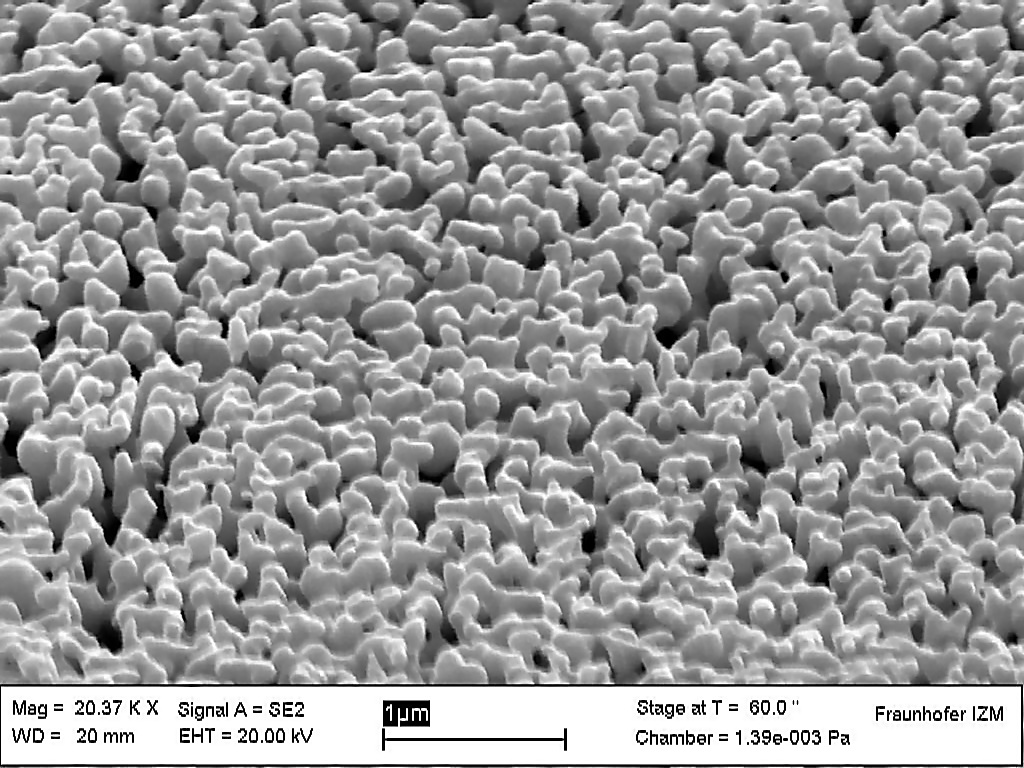Porous Au structures on semiconductor wafers can be fabricated by electroplating of Ag/Au (70/30) layers with subsequent de-alloying of the deposits. The individual processing steps are largely compatible with the technology and equipment used for conventional Au and Au/Sn wafer level bumping. After a thin plating base is sputtered onto the wafers, a photoresist layer is applied and patterned. A gold socket is then electroplated into the resist openings followed by electrodeposition of the Ag/Au alloy. Finally, the silver content is selectively etched, exposing the sponge-like Au deposits.
Fraunhofer IZM has developed stable Ag/Au alloy electrolytes based on cyanide-complexed precious metals and thiosulfate/sulfite-based electroplating baths for this technique. Both these aqueous formulations are suitable for the replication of photoresist patterns, as they feature adequate resistance against light-induced precipitation combined with high-current efficiency and long-term stability.
The metal sponge structure is formed by surface diffusion and cluster formation during degrading of the Ag. Two different methods can be applied for de-alloying. Using chemical etching technique in a simple dip tank, the silver is dissolved using appropriate oxidizing agents. In electrochemical etching, the silver is oxidized by anodic potential applied to the plating base. A great advantage of the latter method is the ability to detect the end point of the silver dissolution by controlling the current/voltage profile.
These metal sponge structures can be adjusted to a nominal open pore size of between 20 and 200 nm and have a pore volume of around 70%. The deposits are suitable for thermo-compression bonding, reducing the amount of force and temperature needed, and for joining with conductive adhesives. Due to the high compressibility of the porous structures, inhomogeneity and the topography of the chip or substrate can be evened out.
 Fraunhofer Institute for Reliability and Microintegration IZM
Fraunhofer Institute for Reliability and Microintegration IZM